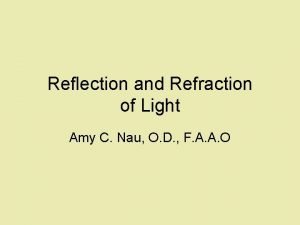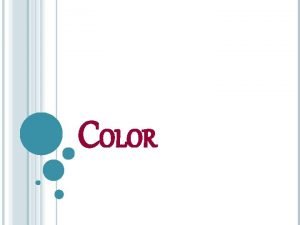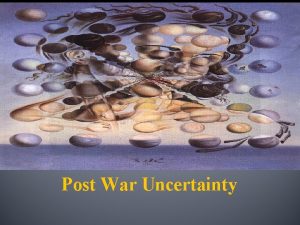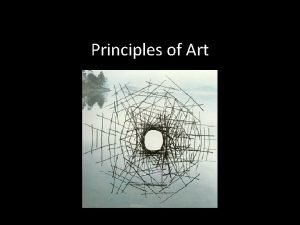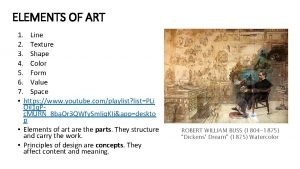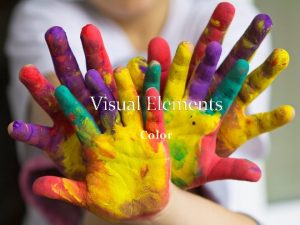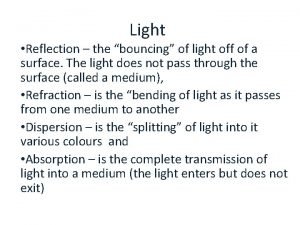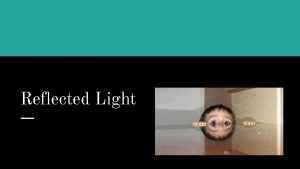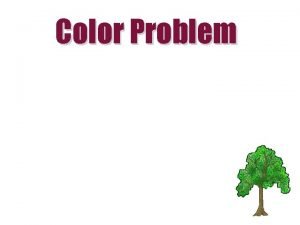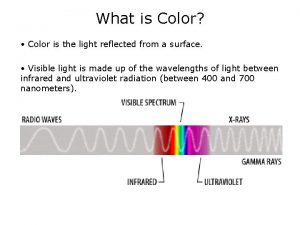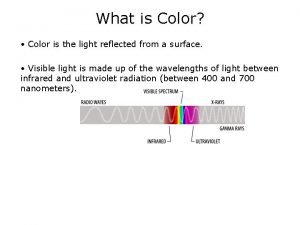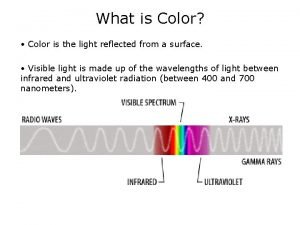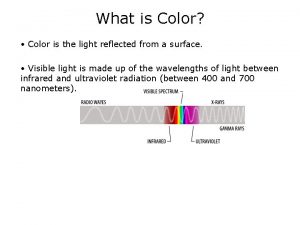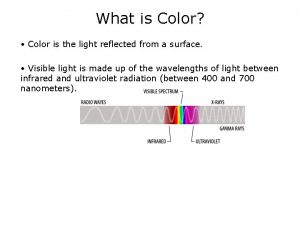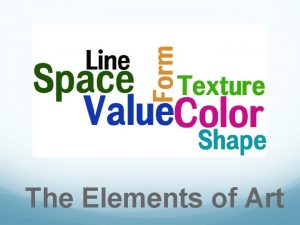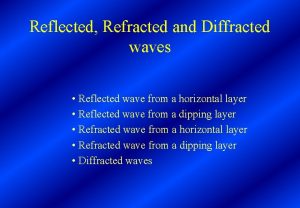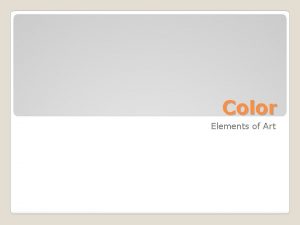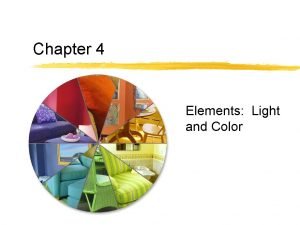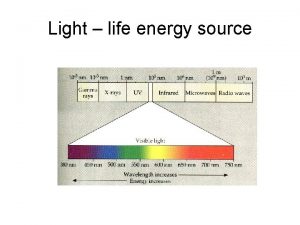Art Elements Color COLOR is light reflected off
















- Slides: 16

Art Elements Color

COLOR is light reflected off objects.

Color Wheel

Primary Colors • The only true colors • All other colors are a mixture of these colors YELLOW RED BLUE

Secondary Colors • Made from mixing two primary ORANGE colors together Purple Green

Intermediate Colors • Made from mixing a primary color and a secondary color together

Color Harmonies • When an artist uses certain combinations of colors that create different looks or feelings

Complimentary Colors • Colors that are opposite each other on the color wheel. When placed next to each other they look bright and when mixed together they neutralize each other.

Complimentary Colors Green Red Yellow Blue Purple Orange

Analogous Colors • Colors that are next to each other on the color wheel for example red, red orange, and orange are analogous colors.

Triadic Harmony • Where three equally spaced colors on the color wheel are used for example, yellow, red, blue is a triadic harmony color scheme.

Monochromatic • Where one color is used but in different values and intensities.

Tint • Adding white to color paint to create lighter values such as light blue or pink.

Shade • Adding black to paint to create dark values such as dark blue or red.

Warm Colors • Warm colors are on one side of the color wheel and they give the feeling of warmth for example red, orange and yellow are the color of fire and feel warm.

Cool Colors • Cool colors are on the other side of the color wheel and they give the feeling of coolness for example blue, violet, are the color of water, and green is the color of cool grass
 Six elements of arts
Six elements of arts The bouncing off of light.
The bouncing off of light. The amount of light that is reflected depends on: *
The amount of light that is reflected depends on: * Louis prang color wheel
Louis prang color wheel Postwar uncertainty
Postwar uncertainty Renaissance painters and sculptors gave great attention to
Renaissance painters and sculptors gave great attention to Light light light chapter 23
Light light light chapter 23 Light light light chapter 22
Light light light chapter 22 Chapter 22
Chapter 22 The great wave off kanagawa elements of art
The great wave off kanagawa elements of art Texture
Texture Visual elements color
Visual elements color Elbows off the table fingers off the food song
Elbows off the table fingers off the food song Elements of art: color
Elements of art: color Elements of theater
Elements of theater When light hits an object what happens
When light hits an object what happens The bouncing of light off an object
The bouncing of light off an object


